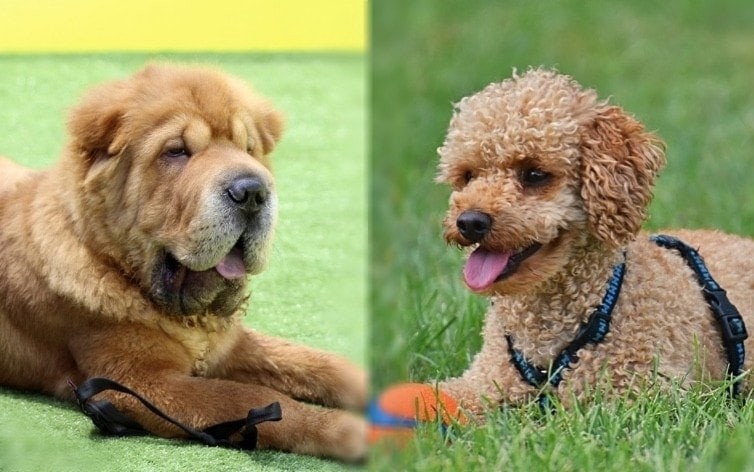
The Shar-Poo, developed in the early 1990s, is a designer breed that combines the intelligent Poodle with the loyal Shar-Pei. This medium-sized hybrid typically stands 14-18 inches tall and weighs between 35-70 pounds. Known for their distinctive appearance, Shar-Poos may inherit the Shar-Pei's wrinkled skin or the Poodle's curly coat. While initially bred to create a low-shedding companion, these dogs have emerged as affectionate family pets with high intelligence and moderate exercise needs. Their temperament blends the Poodle's playfulness with the Shar-Pei's devoted nature, though they can display independence and wariness around strangers.
Shar-Poo Training and Exercise Requirements
Training Methods
While Shar-Poos are generally intelligent dogs, their stubbornness from the Shar-Pei parent requires specific training approaches. Early socialization between 8-16 weeks is crucial. Use positive reinforcement with treats and praise rather than punishment. Keep training sessions short (10-15 minutes) but frequent (2-3 times daily) to maintain engagement.
Exercise Schedule
These energetic dogs need structured physical activity:
- 45-60 minutes of daily exercise split into 2-3 sessions
- Mix of activities: walks, fetch, agility training
- Mental stimulation through puzzle toys and training games
- Supervised off-leash play in fenced areas
- Avoid intense exercise in hot weather due to their facial structure
Proper exercise prevents destructive behaviors while strengthening the human-dog bond.
Physical Characteristics & Appearance of the Shar-Poo
Size and Structure
The Shar-Poo typically stands 14-18 inches tall and weighs between 35-70 pounds. Their appearance can vary significantly depending on which parent breed's genes are more dominant. They may inherit the Shar-Pei's distinctive wrinkles or the Poodle's curly coat.
Grooming Requirements
These mixed breeds require specific grooming based on their coat type:
- Weekly brushing for shorter coats
- Every other day brushing for longer/curly coats
- Regular cleaning of skin folds if present
- Weekly wrinkle checks and cleaning
- Nail trimming every 4-6 weeks
- Teeth brushing 2-3 times per week
- Regular ear cleaning and drying
While the previous exercise section covered activity needs, proper grooming is essential for preventing skin infections and maintaining coat health.
Health and Temperament Profile of the Shar-Poo
Genetic Health Considerations
This hybrid breed can inherit health conditions from both parent breeds. Major concerns include Cushing's disease, Shar-Pei fever, and epilepsy. Regular veterinary screening is recommended for early detection. While the previous health section covered common conditions, specific monitoring is needed for:
- Thyroid function tests every 1-2 years
- Annual eye examinations
- Hip and elbow evaluations by age 2
Social Personality Traits
While earlier sections discussed training, the Shar-Poo's temperament requires special consideration:
- Forms strong bonds with immediate family
- Exhibits caution with strangers but rarely aggressive
- Prefers being the only pet
- Shows independence from Shar-Pei lineage
- Displays high intelligence from Poodle genetics
Conclusion
The Shar-Poo, a mix between the Shar-Pei and Poodle breeds, presents a unique combination of physical and behavioral traits that require dedicated care and attention. These dogs typically stand 14-18 inches tall, weighing between 35-70 pounds, and need 45-60 minutes of daily exercise split across multiple sessions. Their grooming needs vary based on their inherited coat type, with regular maintenance being essential for preventing skin issues, particularly if they inherit the Shar-Pei's characteristic wrinkles.
From a temperament perspective, Shar-Poos combine the Poodle's intelligence with the Shar-Pei's independent nature, necessitating consistent positive reinforcement training from an early age. While they form strong bonds with their families, they tend to be cautious around strangers and may prefer being the only pet. Potential owners should be prepared for regular health monitoring, particularly for conditions like Cushing's disease and Shar-Pei fever, and commit to both the physical exercise and mental stimulation requirements these dogs need to thrive.